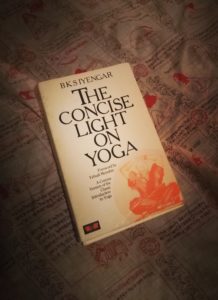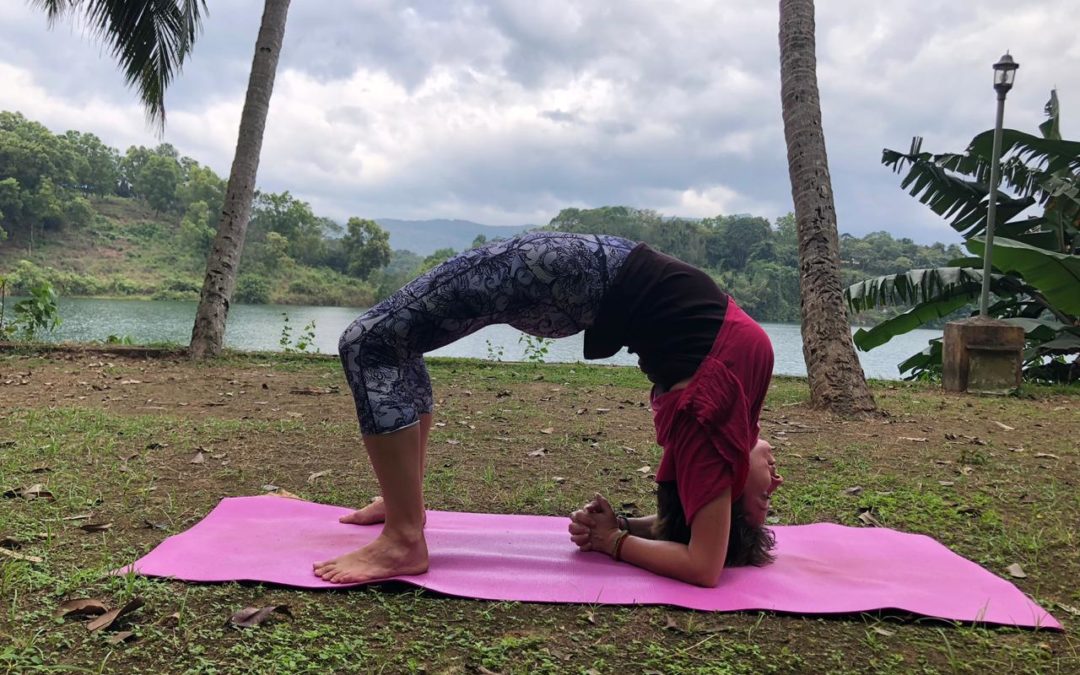I first started my yoga home practice when I was doing my first Yoga Teacher Training in 2005. I had picked up an old copy of ‘The Concise Light on Yoga’ by BKS Iyengar from a secondhand shop, it was falling apart a bit with pages loose! I still have it on my bookshelf. In the back Iyengar gives some progressive yoga plans to do at home. I would lay out my yoga mat in my living area with my Iyengar book and flip back and forth to see what each pose was as I was still learning the Sanskrit names. I felt a special energy in practising by myself, I was able to tune into how I was feeling in each pose.
Since that time I have maintained a morning home practice. I follow a sequence I made for myself and interchange poses in the same category each day. I start with warm ups and Sun Salutes and conclude with an inversion followed by pranayama and Shavasana. I include some poses that give me a challenge to increase my strength, flexibility and/or balance.
A balanced home practice will include some warm ups, a forward bend, backward bend, lateral stretch, spinal twist and an inversion. This allows the spine to move in each direction and provides a counter pose for each position.
When we are in the silence of our own space or room we can be more aware of the sensations in our body and follow our intuition to guide us to what movement our body needs. Attending regular classes with a teacher is also important to get corrections in poses that we may not realise that we need. Being comfortable and confident to do our own practice means that we can roll out our mat anytime, wherever we are and keep up our yoga.

My original guide to home practice
Guidelines for doing yoga at home:
- practice on an empty stomach preferably in the morning
- do sufficient warm ups such as joint rotations or cat pose to prevent injury
- choose a space where you won’t be disturbed and put your phone on silent
- if possible use the same space every day as it helps to build up the energy there
- create a balanced practice as mentioned above
- be regular in your practice, either every day or the same days each week. It is advisable to have one day off a week
- be flexible in your approach so that you allow yourself a gentle practice if you are tired or injured
- For women who are menstruating take some rest days, towards the end of menstruation you can focus on forward bending asanas
I hope you have found this useful to inspire your home practice. If you have any comments please post below.

Recent Comments